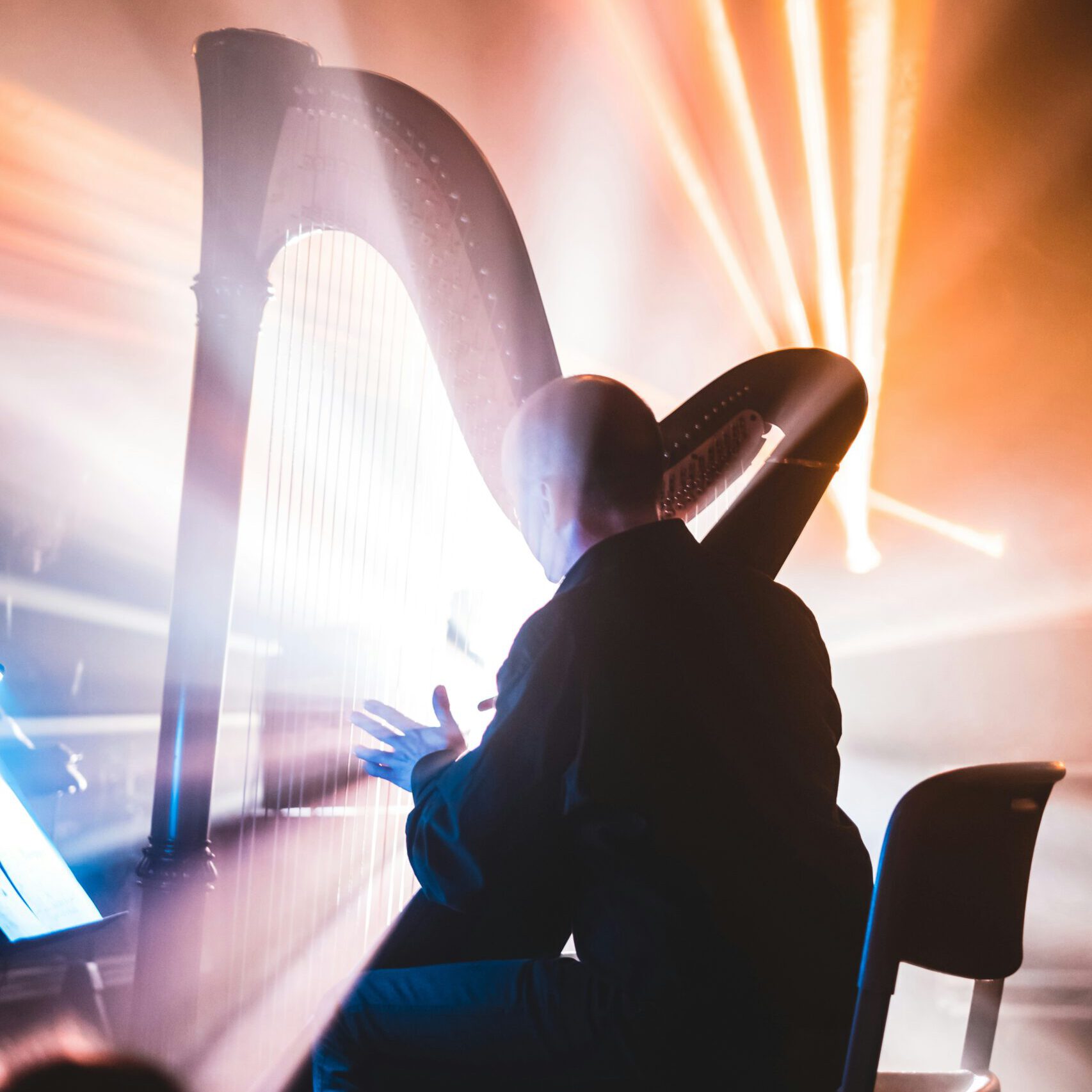The harp is a string instrument, in which the strings are usually made to vibrate with the fingers. The harp is constructed like a figure 7, consisting of an elongated sound box and a straight or arched neck, between which a large number of strings are stretched, differing in length and thickness. Each string produces only one tone: the longer (and thicker) the string, the lower the tone. The ends of the neck and sound box, the head and the foot, are supported along the lowest string by the column, which can be straight or gracefully curved. The tuning pegs or tuning pins protrude through the neck, to which the strings are attached on the left, and the angular forged ends protrude on the right so that they can be tuned.
Harps have been around for a few thousand years. In prehistoric times, people already used their hunting bows as musical instruments, but they only had one string. By placing several bows in a row, they could produce multiple tones. Later, they made arched harps; bows with multiple strings. The first ‘real’ harps are known from Egypt as early as 3500 BC.
Register for the lessons
Trial lessons
The harp is a string instrument, in which the strings are usually made to vibrate with the fingers. The harp is constructed like a figure 7, consisting of an elongated sound box and a straight or arched neck, between which a large number of strings are stretched, differing in length and thickness. Each string produces only one tone: the longer (and thicker) the string, the lower the tone. The ends of the neck and sound box, the head and the foot, are supported along the lowest string by the column, which can be straight or gracefully curved. The tuning pegs or tuning pins protrude through the neck, to which the strings are attached on the left, and the angular forged ends protrude on the right so that they can be tuned.
Harps have been around for a few thousand years. In prehistoric times, people already used their hunting bows as musical instruments, but they only had one string. By placing several bows in a row, they could produce multiple tones. Later, they made arched harps; bows with multiple strings. The first ‘real’ harps are known from Egypt as early as 3500 BC.



